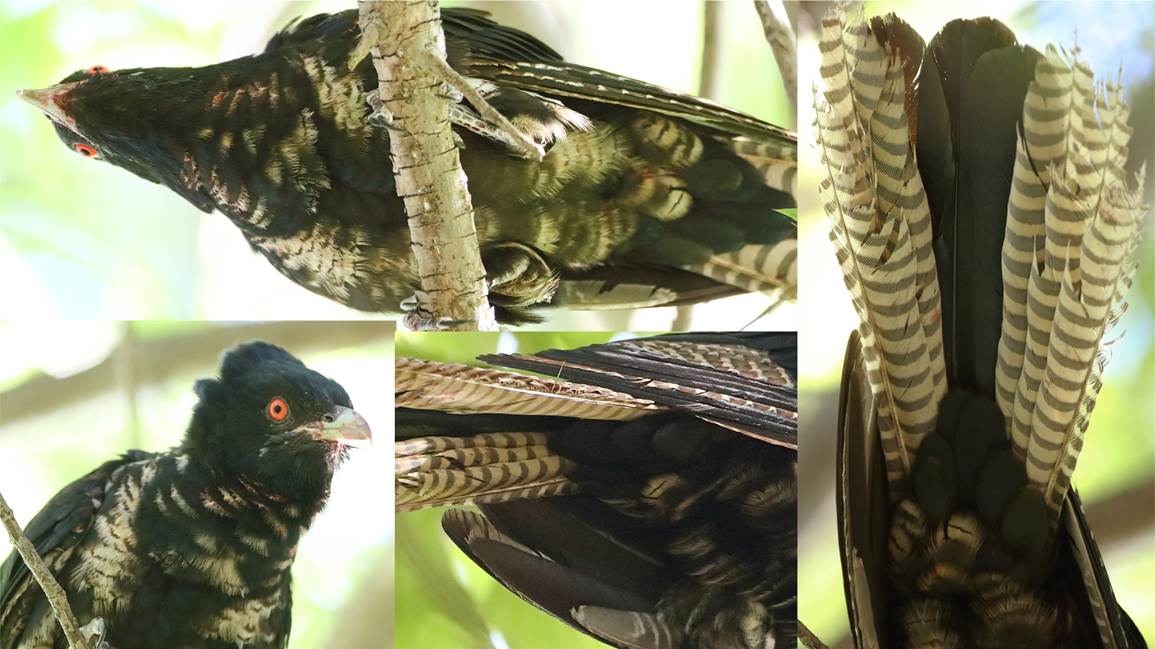I’ve exchanged messages with Steve Wallace about this. This morning I went to find the unusual male Di White had photographed. I found it deep in the leafy pin-oaks of Carnegie Crescent, where it remained with another male (in a wurra-wurra
duel) for more than an hour. At least 4 males were in the vicinity and 2 females, as well as the beeping chick around the corner in Di’s garden in Caley.
HANZAB notes different views on the complicated question of the second year plumage of the male koel. Is there a distinctive ‘immature’ plumage? There is considerable individual variation. Some birds retain old juvenile primaries and
tail feathers into the second year, along with mainly black new plumage.. This bird shows such, quite worn, along with new black feathers. The worn feathers were those it would have had when leaving Canberra last season (assuming it was born here). In addition,
consistently with HANZAB, the bird has some new feathers on the underparts that, unlike the juvenile, are generally black but, unlike the adult, have a buff fringe.
The immature, if we can call it that, was calling more aggressively than the nearby adult male, as well as doing more than its share of croaking and growling.
I noticed a new loud call by an adult male in flight, rather like a female: ‘chink – chink – chink, chinka-chink’.


